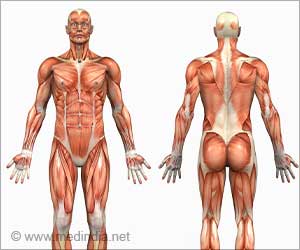An excessive amount of mechanosensation in the neurons that sense one’s limbs in space can cause musculoskeletal deformities such as arthrogryposis.
Their study also provides proof of concept that reducing this heightened sensory neuronal activity (via Botox or special diet) during a critical age could be a viable way to treat some musculoskeletal conditions in a non-invasive manner.
What is Distal Arthrogryposis
Distal arthrogryposis (DA) is a disorder characterized by congenital joint deformities, or contractures, that often restrict movement in the hands and feet and is estimated to afflict roughly one in 3,000 individuals worldwide. Alleviating the symptoms often requires invasive surgeries.
Although mutations in genes associated with muscle and joint function have been linked to DA, gain-of-function mutations in PIEZO2 – a principal mechano-sensor in sensory neurons that underlies touch sensation, proprioception, and other mechanosensory processes – have been found in patients with DA subtype 5 (DA5). However, the mechanism by which PIEZO2 mutations cause DA is unknown.
Using a mouse model, Shang Ma and colleagues found that over-expression of the mutant PIEZO2 gain-of-function allele in proprioceptive neurons that enervate muscles and tendons during a critical postnatal period during development can cause joint contracture. These defects were not caused when the dysfunctional allele was expressed in skeletal muscles, cartilage, or tendons.
Advertisement
“Finding that expression of the gain-of-function allele of PIEZO2 in young adult mice does not cause DA symptoms is reassuring. It narrows down a time window for potential therapeutic intervention that could lead to lifelong improvement for the affected patients,” said Ma et al.
Source: Eurekalert



